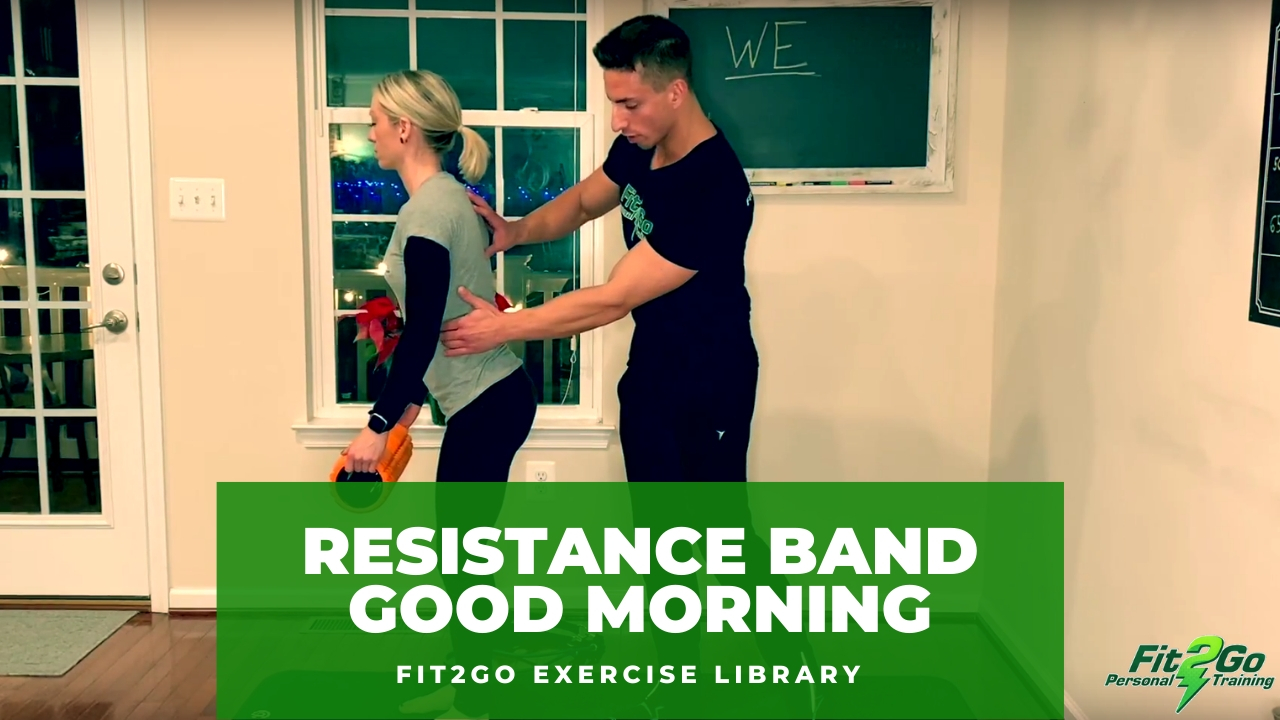
09 Jan Resistance Band Good Morning
Resistance bands are the single most essential and versatile piece of equipment for a home workout. That’s right — you DON’T need a $5000 machine to get fit and healthy.
Here’s the link to a great set on Amazon. Grab ’em if you need ’em.
If exercises were movie stars, the squat would be an A-list celebrity.
The squat is one of the most famous exercises ever created. And for good reason. It’s one of the most important movement patterns that a human needs to function in the world.
But there’s a second fundamental lower body movement which is not nearly as famous.
It’s called the hip hinge.
Though the hip hinge is not nearly as well-known as the squat, it’s every bit as important.
Why?
Well, when we talk about an exercise’s “importance”, we’re not making arbitrary statements.
A movement pattern is considered important if we need that movement to function daily.
The hip hinge is one of those movements.
In fact, the hip hinge is the only way to safely lift a heavy object off the floor.
The inability to perform a proper hip hinge is precisely why so many people injure their backs while trying to pick something up.
So how does it work?
It’s pretty simple:
Your lower back is not meant to lift heavy objects on its own. In fact, when lifting a heavy object, the spine should see no movement at all.
Rather, your lower back — and the rest of your core muscles — are supposed to do the opposite. They’re supposed to stabilize and RESIST movement in your spine while you move.
It’s your legs that should actually do the lifting. Specifically, your hamstrings and glutes should bear the brunt of the work.
So, let’s take a look at how to perform a proper hip hinge and save your lower back.
We’ll use an exercise called the Resistance Band Good Morning.
INSTRUCTIONS:
Starting Position: Begin by standing on a resistance band with your feet hip width apart. While holding the handles, bring your hands up and rest them on your shoulders. Your body should be absorbing the tension, rather than your arms.
Step 1: Keeping your abs and glutes tight, sit your hips back as you lower your torso towards the floor. Your knees should bend slightly and most of the movement should happen at your hip joints. There should be no movement in your spine.
Step 2: When your torso is just about parallel to the ground, pause and hold for two seconds. You should feel a solid stretch through the back of your legs.
Step 3: Maintaining that neutral spine, squeeze your glutes and push your hips forward as you return to the starting position.
Repeat for the recommended number of repetitions.


